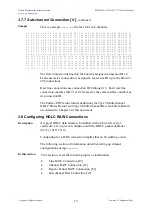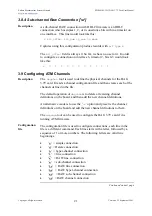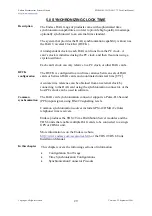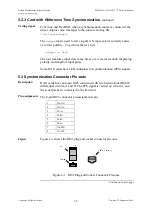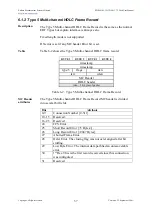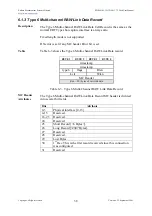
Endace Measurement Systems Limited
http://www.endace.com
EDM01.05-12r1 DAG 3.7T Card User Manual
Copyright, all rights reserved.
31
Version 6. 22 September 2005.
5.2.1 Single Card no Reference Time Synchronization
Description
When a single card is used with no external reference, the card can be
synchronized to the host PC’s clock.
The clock in most PC’s is not very accurate by itself, but the DUCK drifts
smoothly at the same rate as the PC clock.
If a PC is running NTP to synchronize it’s own clock, then the DUCK
clock is less smooth because the PC clock is adjusted in small jumps.
However, overall the DUCK clock does not drift away from UTC.
The DUCK clock is synchronized to a PC clock by setting input
synchronization selector to overflow:
dag@endace:~$ dagclock –d dag0 none overin
muxin overin
muxout
NOTE:
dagclock
should be run only after appropriate Xilinx images have
been loaded. If the Xilinx images must be reloaded, the
dagclock
command must be rerun afterwards to restore the configuration.
5.2.2 Two Cards no Reference Time Synchronization
Description
When two DAG cards are used in a single host PC with no reference
clock, the cards are to be synchronized in some way if timestamps
between the two cards are to be compared. For example, if two cards
monitor different directions of a single full-duplex link.
Synchronization between two DAG cards is achieved in two ways. One
card can be a clock master for the second, or one can synchronize to the
host and also act as a master for the second.
Synchronizing
cards
If both cards are to be accurately synchronized, but not so for absolute
time of packet time-stamps being correct, then one card is configured as
the clock master for the other.
Locking cards
together
Although the master card’s clock will drift against UTC, the cards are
locked together.
The cards are locked together by connecting the synchronization
connector ports of both cards with a standard RJ-45 Ethernet cross-over
cable.
Configure one of the cards as the master, the other defaults to being a
slave.
Continued on next page



